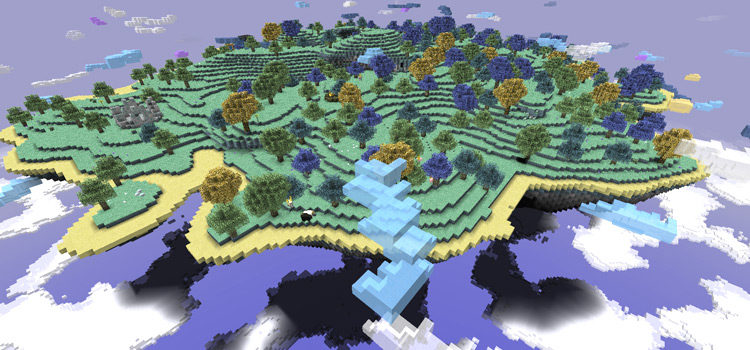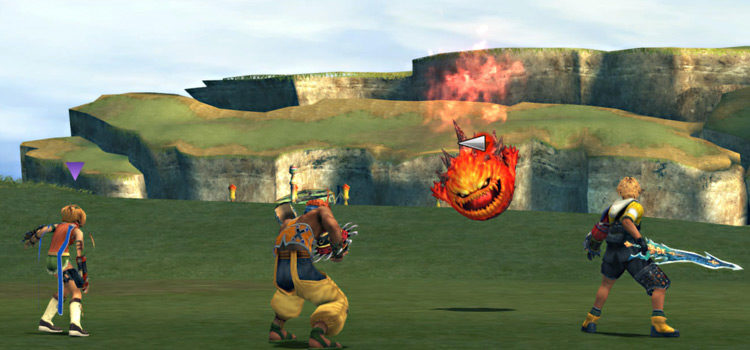Dimension Door: D&D 5e Spell Guide + Uses
This post may contain affiliate links. If you buy something we may get a small commission at no extra cost to you. (Learn more).
Teleportation is always fun.
Whether you’re disappearing in the middle of combat, or covering hundreds of miles in the blink of an eye, teleportation spells are some of the more popular utility spells in 5th Edition.
Let’s take a look at one of the classic teleportation spells: dimension door.
Dimension Door Spell Details
Type: 4th Level Conjuration
Casting Time: One Action
Range: 500 ft.
Components: V
Duration: Instantaneous
When you cast the spell, you teleport yourself and any objects you can carry to a place of your choice within 500 feet.
You can also bring along a willing creature that isn’t carrying more weight than its carrying capacity. The creature has to be your size or smaller.
If you try to teleport to a location that is already occupied, the spell fails. You and any creatures you were teleporting take 4d6 force damage.
Who Gets It?
In a way, everyone can learn this… if you can afford a rare magic item.
The dimension door spell is on the spell lists for the bard, sorcerer, warlock, and wizard.
Trickery Domain clerics and Oath of Vengeance paladins have it as a bonus domain or oath spell from their subclass, and for them it is always prepared. Fey Wanderer rangers get it as a subclass spell as well.
Because the spell is on the wizard spell list, Eldritch Knight fighter and Arcane Trickster rogues have access to it as well, although they don’t get 4th-level spells until pretty late in their careers.
Humans from Eberron that have the Dragonmark of Passage have dimension door, along with several other spells, added to their class’ spell list (if they have one).
On top of the people who can cast the spell with their own spell slots, dimension door can be cast without a spell slot from a Cape of the Mountebank.
These capes are relatively popular magic items simply because that one-per-day free dimension door allows any character to quickly escape from a bad situation, traverse an otherwise difficult obstacle, or to catch up to a target instantly during a chase.
It can also be cast from Bookmark (a rare and unique dagger from Tomb of Annihilation) and the Infiltrator’s Key (a legendary item from Wildemount). Both are significantly less likely to be available in a campaign.
Pros and Cons
There are a number of teleportation spells in D&D, each functioning slightly differently.
Dimension door has a unique niche as a kind of mid-range teleportation spell that allows you to bring someone with you. Misty step, far step, and thunder step all have smaller ranges with different features.
Scatter allows the caster to teleport up to five creatures to a location within a short-to-mid range.
Meanwhile, the teleportation circle, word of recall, and teleport spells all transport multiple creatures a much greater range but require higher level spell slots.
As such, it helps to focus on what each individual teleportation spell has that sets it apart from the others.
Range
Dimension door has the largest range of the lower-leveled teleportation spells, allowing the caster to travel up to 500 feet.
This can end up being quite useful. Dimension door is invaluable when needing to escape a particularly nasty monster or a dangerous location. In most cases, 500 feet is more than enough to give you time to evade any pursuers.
The few times it won’t simply let you escape are against creatures with high movement speeds (like rocs, or creatures on the back of a phantom steed). In areas with a lot of cover, 500 feet may still be enough to give you a chance to hide.
Spells like locate creature or locate object, however, have a range of 1,000 feet. If you (or an object you’re carrying) are being tracked by someone capable of casting either of those spells, dimension door’s 500 feet won’t be enough to get you fully out of their range.
With any luck, it might still buy you the time you need to escape.
Target Location
Dimension door doesn’t require you to be able to see where you want to teleport to, unlike scatter, far step, misty step, and thunder step.
Meanwhile, teleportation circle and word of recall require you to teleport to a specific location, while teleport has massive drawbacks that can happen if you try to teleport to a location you aren’t particularly familiar with.
As a result, dimension door is one of the few spells that lets you simply designate a location that you’d rather be.
This can come in handy if you need to get yourself to a location that you haven’t been to before. Dimension door can be used to infiltrate castles, get inside some creatures’ lairs, or teleport into bank vaults (assuming the local mages aren’t skilled enough to ward it against teleportation).
While there are spells that block teleportation magic, large fortresses aren’t likely to be completely covered by them, and many monsters won’t have the kind of spellcasting needed to protect hoards or lairs.
On top of that, since scatter, far step, misty step, and thunder step all require that you teleport to a place you can see, they can sometimes be foiled by blinding the caster.
Anything from the darkness, blindness/deafness, or fog cloud spells, to simply extinguishing any available light, or just throwing a sack over a caster’s head can block those teleportation spells.
That method doesn’t work on dimension door, however, giving you one last way to teleport to safety if you find yourself in a jam.
Tips and Tricks
Dimension door has some unique uses, depending on how you choose to use the spell.
And if you want some use ideas for 5e we’ve got you covered:
Willing
The spell specifically says you can bring one willing creature of your size or smaller.
There’s some weirdness about how that works. An ally would normally be willing, but if they’re knocked unconscious and you’re trying to get them to safety, can they be unconscious and willing?
‘Willing’ and ‘unwilling’ don’t have specific definitions when it comes to how they work with magic in 5e. Ultimately, those kinds of calls are left up to the individual DM.
Most will probably let you teleport an unconscious friend away from an angry kraken.
Another thing to keep in mind is that a dead creature technically counts as an object.
If you can carry something, you can dimension door away with it, which gives you another way to get a fallen ally’s body off the field, if you need to get them somewhere to revive them.
This works even if the dead creature’s size is larger than yours, so long as you’re strong enough to carry them.
Charm Spells
One important aspect of that ‘willing’ requirement, however, is it doesn’t say anything about why the target is willing.
Normally, you wouldn’t be able to grab an opponent and teleport them with you to a location that would be dangerous to them.
But, if you use a spell like charm person, charm monster, or suggestion to convince them to come with you, you now have a perfectly willing creature you can teleport.
It has to be a creature of your size or smaller, but in the right situation, you might be able to drop suggestion on the enemy commander, then dimension door them either 500 feet up in the air or over something particularly nasty.
With any luck, you might be able to get 20d6 of damage out of your two spells, or more if the target gets dropped into a pit of lava or an acid pool.
You’ll need a way to not fall in yourself, but between spells like feather fall and magical items that allow you to fly, levitate, or teleport, you should be fine.
Environmental Hazards
Even if the area around you doesn’t have something like a pit of lava or an acid pool, you can always provide your own hazards.
Dungeons often have some extremely dangerous traps, and as long as you can still use dimension door, there’s nothing to stop you from dropping a charmed enemy into one of them.
Spiked pits, spinning blades, or tanks full of piranhas come to mind, but pretty much any danger could be useful.
There are some traps which guarantee almost certain death, and could be extremely convenient if you can set up this dimension door trick.
But, what if there isn’t a helpful dungeon nearby with spiked pits covered in purple worm poison?
Well, you can always make your own. There’s nothing stopping you from setting up some spikes covered in whatever poison you can get your hands on.
It’s best to use a poison that still does half damage on a successful save, as many enemies have good Constitution saving throws.
On top of that, there are other hazards you can arrange to drop a temporarily friendly enemy into.
In Xanathar’s Guide to Everything, the second chapter details a number of uses for tools within the game. Two of these come in handy for these kinds of tricks.
Alchemist’s supplies can be used to make some alchemical items (like acid or alchemist’s fire), and thieves’ tools allow you to assemble traps.
The rules are optional, so you should check with your DM to see if you can use those rules. If it’s allowed, you can craft vials of acid with alchemist’s supplies for 12.5 gold pieces.
Normally, the acid is thrown or splashed at a target as an improvised weapon, dealing 2d6 damage on a hit.
What if, however, you made lots of acid vials. Maybe 20 or so small vials, all tied together.
Depending on how nice your DM is feeling, you might be able to turn your acid vial bundle into a trap with thieves’ tools. Alternatively, your DM might let you drop a creature directly onto those vials.
This definitely qualifies as shenanigans. But if you can manage to set it up, some DMs would be happy to let you get away with it.
If you get extremely lucky, your 20 vials could end up dealing 40d6 of acid damage to the creature you drop.
Magical Hazards
Other, more by-the-book hazards include various different spells that create areas of dangerous effects.
Depending on how you time everything, you could drop a creature into an area under the effect of multiple spells that do damage the first time a creature enters the area or (ideally) starts its turn there.
Spells like wall of fire, wall of thorns, maelstrom, or evard’s black tentacles all create useful zones of damage. Some, like evard’s black tentacles, deal both damage and try to trap creatures inside of the zone.
Stacking multiple spells like evard’s or web that restrain a creature means that even if it manages to save out of one such spell, it might fail against the other, meaning that it would still take damage from another nasty spell like cloudkill.
Monster Bomb
This works as an extension of the charm trick above.
The thing to remember is that you can bring any willing creature with you, so long as it’s your size or smaller.
Obviously, the majority of dangerous creatures are going to be either bigger, or unwilling, so that’s the first hurdle to deal with.
But let’s say hypothetically that there was an enemy base you knew about. On top of that, you know where to find a dangerous creature (ideally with low Wisdom saves).
In theory, and this can be a little hard to set up, you could polymorph the creature into a beast your size or smaller. You or a friendly caster can then cast animal friendship or a similar charm spell on said beast.
You now have a creature your size or smaller that (hopefully) is perfectly willing to travel with you. Maybe bring some kibble for bribes.
You then teleport to a location above the camp and set the beast loose, either having someone drop the polymorph spell or simply dropping the transformed creature so the fall damage knocks it out of its beast form.
The usefulness of this trick entirely depends on what you manage to polymorph, and what kinds of resources your other enemy has. A dragon on its last legs isn’t that big of a threat against a well-armed fortress with multiple wizards in attendance.
On the other hand, a werewolf immune to nonmagical attacks could wreak havoc in an enemy encampment if those troops aren’t expecting lycanthropes and don’t have any silvered or magic weapons.
Granted, you’d then have to make sure you don’t leave any new werewolves running around after the attack, but it could still work as a nice first volley in an assault.
Carrying Capacity
Dimension door allows you to teleport along with any objects you want, as long as the weight is more than you can carry.
Your carrying capacity is a number of pounds equal to 15 times your Strength score, so a creature with 18 Strength can carry 270 pounds.
That’s nice, but we can make that bigger.
First off, orcs, goliaths, bugbears, loxodons, and firbolgs have a feature called Powerful Build. Powerful Build is relatively simple, and allows the creature to count as one size larger when determining how much they can carry, push, drag, or lift.
We only really care about carrying capacity right now. For each size category above Medium, you double the weight that a creature can carry.
What that means is that a human with 18 Strength can carry 270 pounds, but a goliath with 18 Strength can carry 540 pounds.
A creature with the ability to cast dimension door and a high carrying capacity can be very useful. You can bring more treasure out of a vault (assuming you don’t have a portable hole or some other storage item).
You could also bring much larger items in or out of combat as part of an escape or ambush.
Now, 540 pounds is a lot, but let’s make it bigger.
A useful and relatively low-levelled spell is the enlarge/reduce spell. The spell doubles the target’s size in all dimensions, which has a number of effects, but the main one here is an increase to its carrying capacity.
An enlarged goliath is now a Large creature that counts as one size larger, meaning that it can now carry 1,080 pounds (still assuming 18 Strength).
Again, we can do better.
Tasha’s Cauldron of Everything includes a new fighter archetype called the Rune Knight, a fighter who uses magic derived from the giants to grow in size and create various effects.
While the class itself comes with a lot of cool abilities, we care primarily about the size increase right now.
So, in order, our example goliath fighter uses their Giant’s Might ability to become a large-sized creature. A friendly spellcaster pops enlarge/reduce, and our goliath Rune Knight is sitting pretty as a Huge-sized creature who lifts as a Gargantuan-sized creature.
We’re talking about a goliath the size of an actual giant, capable of lifting 2,160 pounds.
At 18th level, our goliath could get even bigger, as their Giant’s Might feature now allows them to become Huge-sized. That means enlarge would bump them up to Gargantuan.
Powerful Build would probably stop helping here, as there is no size above Gargantuan for the goliath Rune Knight to count as. 5th edition dropped the Colossal size category that previous editions had.
Now we simply have to imagine what can be done when a goliath player character who can lift over 2,000 pounds can teleport.
Dimension door allows for your giant-sized ally to simply appear in the middle of a town, wrecking shop like Godzilla in Tokyo. As an intimidation tactic, you could do some kind of ritual, ‘summoning’ a giant to your side.
A number of creatures revere or fear giants, so someone they think is capable of summoning one would be a power to contend with.
You could set up a lovely scheme where wandering ‘giants’ keep attacking towns, and you and your team go about ‘banishing them’. All you need is to give your Rune Knight a cape of the mountebank so they can vanish in a puff of smoke when you give them their cue.
Alternatively, imagine a Rune Knight goliath with boots of flying and 2,000 pounds of rocks they can drop down on the heads of an unsuspecting bandit camp.
If you’re feeling helpful, you could use your giant-sized party member to transport massive amounts of supplies across enemies lines, bringing food or medicine to besieged castles.
You could even have your Rune Knight ally holding back a collapsing dam or a ceiling, only to teleport away when your enemy approaches. The target creature then gets hit by whatever the Rune Knight is no longer holding back.
Ultimately, dimension door is an extremely useful utility spell that allows for any number of tricks that involve instantaneous movement over decently long distances.






